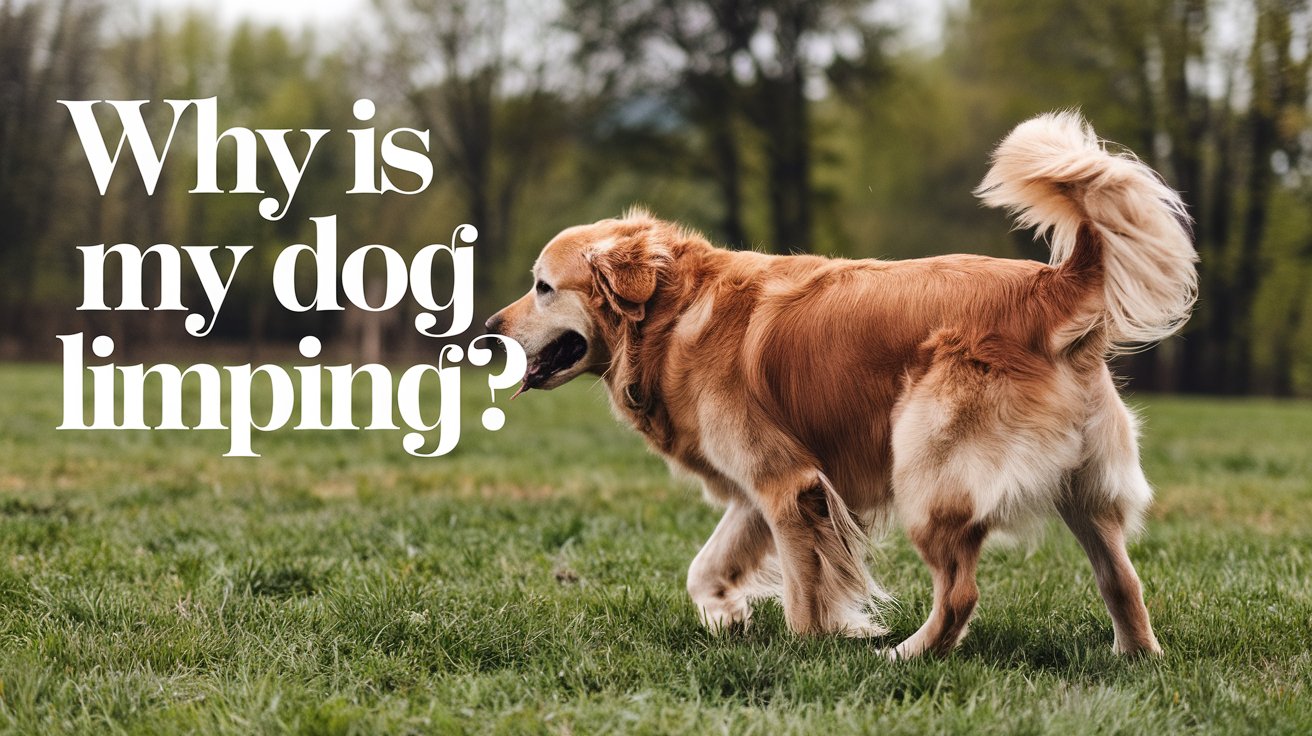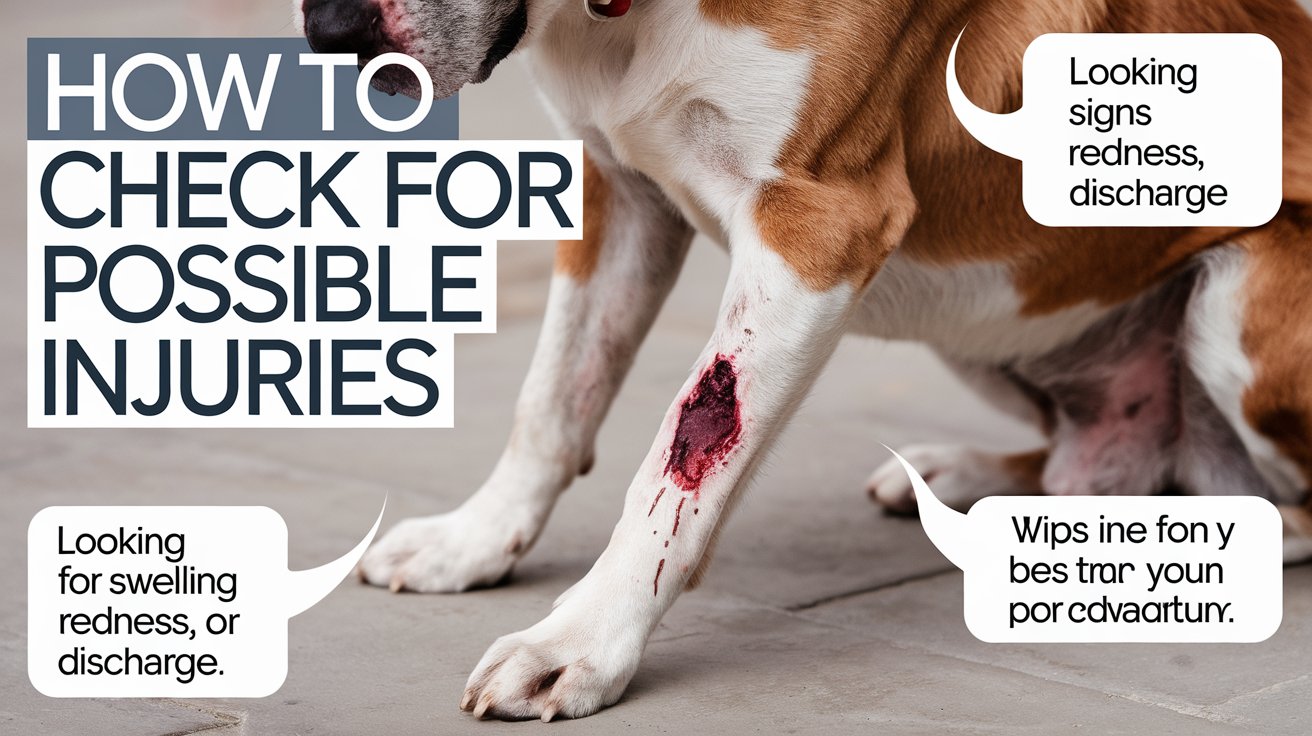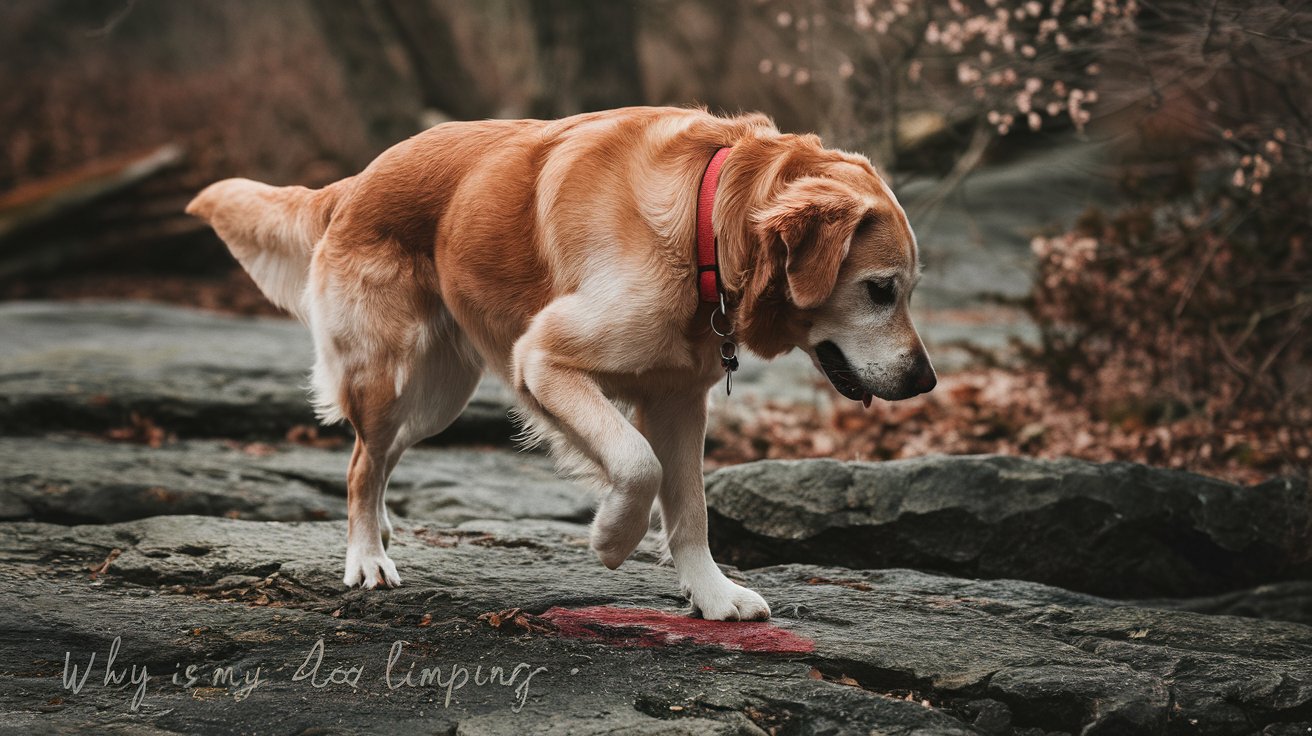
Why Is My Dog Limping? Common Causes and What to Do
What Causes Limping in Dogs?
Dogs can limp for a variety of reasons, some more serious than others. It’s important to observe your dog to help narrow down the possible cause.
Injuries
One of the most common reasons dogs start limping is an injury. This could be something as simple as a cut or thorn in the paw, or it could be something more severe, like a sprain, muscle strain, or a broken bone. Dogs are active creatures, so it’s not uncommon for them to hurt themselves during play, running, or even jumping.
Arthritis
As dogs age, many develop arthritis, a condition that causes inflammation in the joints, leading to stiffness and discomfort. Dogs with arthritis may start limping, especially after rest or in colder weather. Large breeds are more prone to developing arthritis, but any dog can be affected.
Paw Problems
Issues, like cracked paw pads, ingrown nails, or a lodged foreign object (such as a rock or splinter), can cause a limp. Dogs rely heavily on their paws, so even a minor issue can make walking uncomfortable.
Infections or Abscesses
A limping dog may be dealing with an infection in the paw, leg, or elsewhere in the body. Bacterial infections or abscesses (often caused by wounds) can cause significant discomfort and lead to lameness.
Hip Dysplasia
Certain breeds are predisposed to hip dysplasia, a genetic condition where the hip joint doesn’t form properly. This can lead to pain and limping, especially in large or giant breed dogs such as German Shepherds, Labradors, or Golden Retrievers.
Luxating Patella
In smaller breeds, a luxating patella (dislocated kneecap) can be a common reason for limping. This condition causes the kneecap to slip out of place, making it difficult for the dog to bear weight on the affected leg.

How to Check for Possible Injuries
When you first notice your dog limping, it’s important to assess the situation calmly and thoroughly. Start by carefully inspecting the dog’s legs and paws.
- Check the paws: Look for cuts, splinters, or anything stuck in the paw pad or between the toes.
- Inspect the leg: Gently feel the entire leg, checking for swelling, heat, or areas that are tender to the touch.
- Watch for behavioral changes: If your dog is licking or biting at the leg, it could be an indication of pain or irritation in that specific area.
Should I Take My Dog to the Vet?
In some cases, limping can resolve on its own if it’s caused by a minor injury or strain. However, there are times when veterinary care is necessary.
When to Seek Immediate Veterinary Care
-
- Sudden onset of limping without improvement after 24–48 hours
- Signs of extreme pain (whining, crying, or snapping)
- Visible wounds, broken bones, or significant swelling
If your dog’s limp isn’t improving or they seem to be in a lot of pain, it’s always best to consult your veterinarian for a thorough examination and diagnosis.
What Can I Do to Help My Limping Dog?
If the cause of the limp seems minor, there are some steps you can take to help your dog recover:
- Limit activity: Try to keep your dog from running, jumping, or playing too vigorously, as this could worsen the injury.
- Cold compress: Applying a cold compress to the affected area can help reduce swelling and discomfort, especially in the first 24 hours after an injury.
- Check the paws: If you find a thorn or splinter, carefully remove it and clean the area with antiseptic. If there’s a cut, you may need to bandage it to prevent infection.
- Massage: Gentle massaging of the affected area (if not too painful) can sometimes help ease muscle tension and improve circulation.
Long-Term Care for Dogs with Chronic Limping
If your dog’s limping is due to a chronic condition like arthritis or hip dysplasia, you may need to take additional steps to manage their pain and improve their quality of life. This could include:
- Joint supplements:
- Weight management: Maintaining a healthy weight is crucial for dogs with joint issues, as excess weight puts extra strain on the limbs.
- Physical therapy: Some veterinarians recommend physical therapy, such as hydrotherapy or laser therapy, to help dogs regain strength and mobility in their limbs.
- Medication: Anti-inflammatory medications may be prescribed by your vet to reduce pain and inflammation.

Frequently Asked Questions
Why is my dog limping but not crying?
Dogs may limp without vocalizing pain if they are dealing with mild discomfort or a chronic condition like arthritis. Even if they’re not crying, it’s important to monitor their behavior closely and consult your vet if the limp persists.
Can I give my dog pain medication for limping?
Do not give your dog a human painkiller without consulting your vet. Some over-the-counter medications can be harmful or even fatal to dogs. Your vet can prescribe appropriate pain relief based on the cause of the limping.
How long should I wait before seeing a vet for a limping dog?
If your dog’s limp lasts longer than 24–48 hours or worsens, it’s best to seek veterinary care. Immediate vet attention is necessary if the limp is severe or accompanied by other concerning symptoms.
Can limping in dogs heal on its own?
Minor limps caused by strains or small injuries can sometimes heal on their own with rest and care. However, veterinary attention is needed if the limp persists, worsens, or is accompanied by signs of severe pain.
What if my dog limps after playing?
Limping after a vigorous play session could be due to a muscle strain or minor injury. Give your dog time to rest and observe them closely. If the limping continues or worsens, contact your vet.
What should I do if my dog refuses to walk due to limping?
If your dog refuses to walk, it’s a sign that something is wrong. Contact your vet as soon as possible for a proper diagnosis and treatment plan.

I’m Haseem Ali, a passionate writer focused on dog diet, health, training, lifestyle, and care. I’m dedicated to sharing expert advice and practical tips to help fellow dog owners provide the best for their furry friends. When I’m not writing, I enjoy spending time with my own dogs and exploring new pet-friendly activities.
